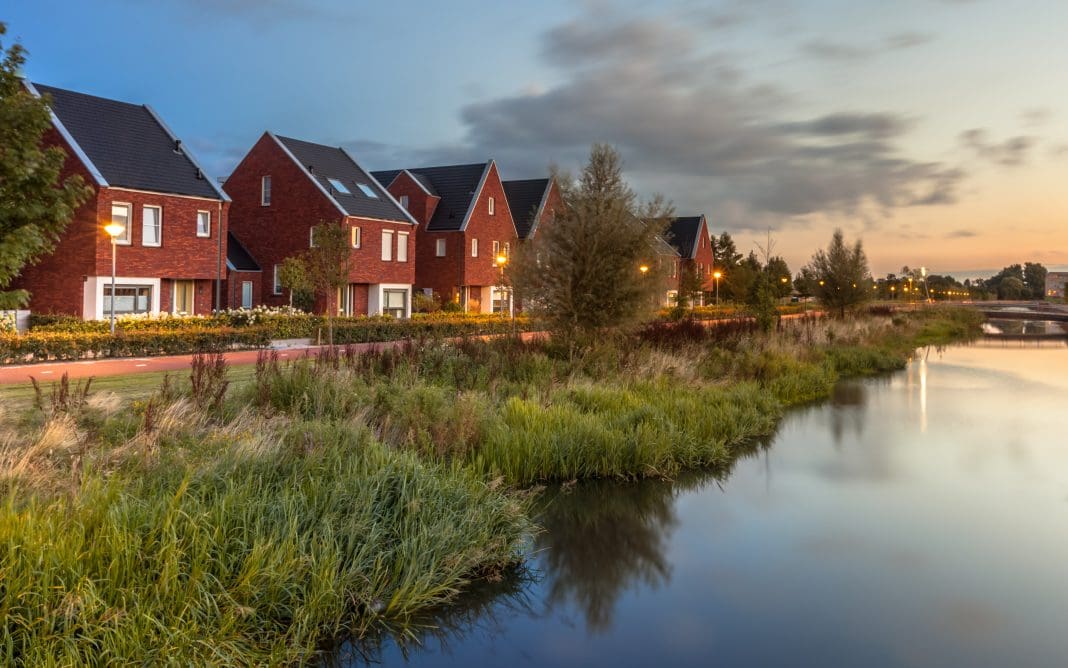Mandatory Biodiversity Net Gain regulations came into force from January, requiring a 10% gain on new developments a condition of planning permission. Lara Dresser, sustainability scientist at Tunley Environmental, examines the new framework and the likely impact on developers
The preservation and conservation of biodiversity have become increasingly important in the face of rapid urban development and the need for new housing in the UK.
As a response to this concern, Biodiversity Net Gain regulations have been implemented to ensure that new housing developments have a positive impact on biodiversity.
About Biodiversity Net Gain
BNG is a mandatory requirement for developers and landowners in England under the Town & Country Planning Act 1990 (as inserted by the Environment Act 2021).
It ensures that development projects have a measurable positive impact on biodiversity compared with the pre-development state. There are six statutory instruments, which became law when BNG went live in January 2024.
The key factor in the regulations is that a 10% increase in Biodiversity Net Gain must be achieved in order to reach compliance.
Who BNG affects
The environmental regulation breakthrough that BNG has initiated are aimed at developers, more specifically:
- Major developments (mandatory from January 2024).
- Small sites (from April 2024).
- Nationally significant infrastructure projects (from late November 2025).
- Land managers in the BNG market.
- Local planning authorities (LPAs).
Understanding BNG assessment
BNG assessment is a crucial component of the BNG regulations. It involves a comprehensive baseline evaluation of the existing biodiversity (pre-development) on a site and the net loss of biodiversity post-development.
BNG assessments further build off the baseline assessment by quantifying how the previously acknowledged biodiversity net loss in post-development can be either prevented or considered by creating or enhancing habitats to result in Biodiversity Net Gain (or a restoration of the impact from development).
This assessment provides developers and local authorities with insight into the number of biodiversity units lost or gained from a project. Biodiversity units will be measured on factors such as size, quality, location and type of development.
By understanding the current state of biodiversity and the potential impacts of development, stakeholders can make informed decisions to minimise harm and maximise the benefits to biodiversity. To comply with the regulations, developers will need to ensure a 10% net gain in biodiversity is achieved.
Biodiversity Metric 4.0
The Biodiversity Metric 4.0 (now known as the Biodiversity Statutory Metric) is a tool used to measure and assess the impact of development on biodiversity. It provides a standardised approach for evaluating the biodiversity value of a site and determining the level of Biodiversity Net Gain required.
By using this metric, developers and local authorities can make informed decisions about how to achieve the desired level of Biodiversity Net Gain and ensure compliance with BNG regulations.
The importance of Biodiversity Net Gain in housing developments
Biodiversity Net Gain refers to the process of ensuring that the biodiversity value of a site is enhanced after development is completed. This means that new housing developments should leave the environment in a better state than before.
BNG regulations recognise the vital role that biodiversity plays in ecosystem health, climate change mitigation and overall wellbeing. By prioritising Biodiversity Net Gain, housing developments can contribute to the preservation and restoration of natural habitats, improve air and water quality, and enhance the overall quality of life for residents.
“Our goal is to assist developers and organisations in creating landscapes that thrive with biodiversity while promoting sustainable development,” said Tara Garraty, biodiversity specialist and sustainability scientist at Tunley Environmental.
How BNG regulations are shaping new housing developments
BNG regulations have had a significant impact on the design and planning of new housing developments. Developers are now required to consider biodiversity as an integral part of their projects, from the early stages of site selection and design to the final landscaping.
This shift in focus has led to innovative approaches, such as incorporating green roofs, creating wildlife corridors and implementing sustainable drainage systems. As a result, new housing developments are becoming more environmentally friendly and providing enhanced habitats for wildlife.
Challenges and considerations in implementing BNG regulations
While BNG regulations have brought about positive changes, they also present challenges for developers and local authorities. One of the main challenges is the availability of suitable land for development that also has the potential for Biodiversity Net Gain. Balancing the need for housing with the preservation of biodiversity can be a complex task.
Additionally, the costs associated with implementing BNG measures and maintaining them over time can pose financial challenges. However, with proper planning, collaboration between stakeholders, use of third-party biodiversity consultants and innovative design strategies, these challenges can be overcome.
The role of developers and local authorities in achieving BNG goals
Developers and local authorities play a crucial role in achieving BNG in housing developments. Developers need to incorporate biodiversity considerations into their design and construction processes, ensuring that BNG goals are met.
Local authorities, on the other hand, are responsible for enforcing BNG regulations, providing guidance to developers and monitoring compliance. Collaboration between developers, local authorities, and biodiversity consultants is essential to ensure that BNG goals are effectively achieved.
The future of BNG regulations and their impact on housing developments
As awareness of the importance of biodiversity continues to grow, it is likely that BNG regulations will strengthen in the future. This will further shape the landscape of new housing developments by placing even greater emphasis on Biodiversity Net Gain.
Developers and local authorities will need to adapt to these changes, incorporating innovative design strategies, utilising advanced assessment tools and collaborating with biodiversity consultants. By doing so, they can create housing developments that not only meet the needs of residents but also contribute positively to biodiversity conservation.
The bottom line
BNG regulations will bring about a significant shift in the way housing developments are planned and executed. By prioritising Biodiversity Net Gain, developers and local authorities are shaping new developments to have a positive impact on the environment.
While challenges exist, the implementation of BNG regulations will lead to the creation of enhanced habitats for wildlife. As we move forward, it is imperative that all stakeholders continue to work together to achieve the goals of Biodiversity Net Gain.
Lara Dresser
Sustainability scientist
Tunley Environmental
Tel: +44 (0)1924 692 099

















